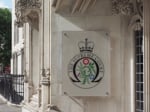The summer months are an opportunity for dealers to pick up poor condition used cars for low levels of investment and refurbish them ready for the forecourt.
Richard Parkin, Glass’s director of valuations and analysis, said this has become a feature of the used car market between June and August when independent bodyshops have spare capacity to take on conditioning work for motor traders.
Older part-exchange cars have been a feature of the growing volume of cars sold through auctions.
National Association of Motor Auction members have reported an increase in volume of almost 50% or 400,000 units in two years, driven by cars aged 6.5 years and older.
The older car segment, where poorer condition cars are a feature, has seen a rise in volume of around 100,000 units in the past 12 months alone.
NAMA research has shown that auction grade has a limited impact on retail asking prices, suggesting that refurbishment is carried out by the motor traders prior to advertising.
The ratio of auction price to retail asking prices indicates an average 17% difference in value between the top grade A/1, requiring no more than a touch up, and the lowest grade E/5, with between two and five major repairs needed.
Parkin said this gap may increase once used car supply improves and buyers have more choice.
“17% is probably the lowest point. In two years’ time it could be more like 25%,” he added.
Parkin said at the moment the discount between grade one and five is only enough to pay the cost of refurbishment to retail condition, but in future this will not be sustainable unless that discount widens.
NAMA chairman Paul Hill said some franchised dealer groups are using NAMA’s national condition grading system to filter out ungraded or poorly graded vehicles that don’t suit their stocking policies.


















Login to comment
Comments
No comments have been made yet.